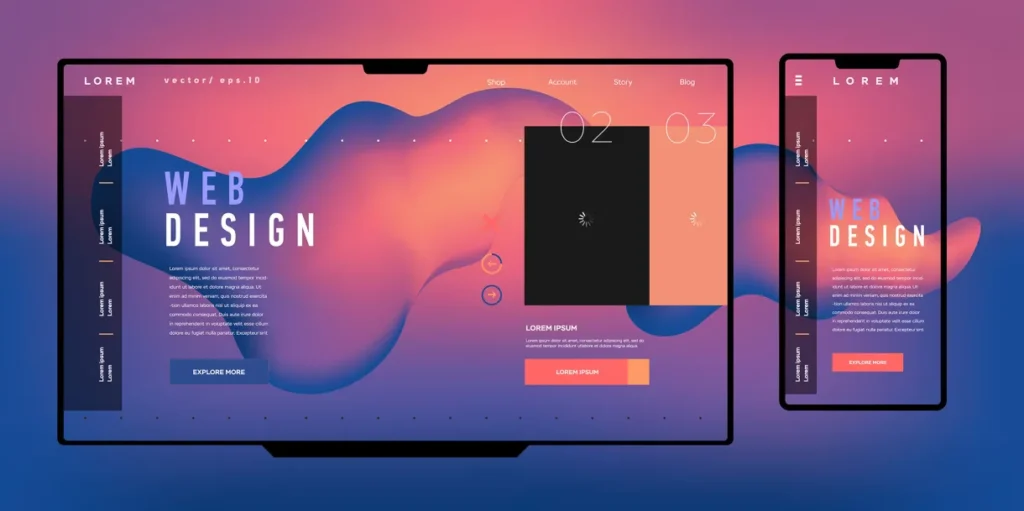The Art of Web Design: A Comprehensive Guide for Digital Designers

In the rapidly evolving world of digital design, web design has emerged as an essential craft, combining UX design, graphic design, and multimedia elements to create engaging, functional, and accessible websites. A well-designed website is not just visually appealing but also enhances user experience, aligning with broader trends in digital transformation.
What is Web Design?
At its heart, web design focuses on creating the visual and aesthetic framework of a website, including elements like layout, colour schemes, typography, and overall appearance. It’s not just about making a website look good; it’s about crafting an experience that is functional, engaging, and easy to navigate. Web design sets the tone for how users interact with a site, making it a key element in any successful digital strategy.
Tools like Adobe Photoshop and Sketch are commonly used to create the visual components of a website, helping designers bring their creative vision to life. Once the design stage is complete, the web development process begins.
The Crucial Role of Web Development
While designers focus on the aesthetics, web developers take these ideas and turn them into a fully functional website. This involves coding with languages such as HTML, CSS, and JavaScript to ensure the site performs well, is responsive across devices, and ranks highly in search engine results.
The partnership between designers and developers is crucial for achieving a harmonious balance between form and function. Designers craft the user interface, while developers ensure the backend supports these features, delivering an optimal user experience.
Key Components of Web Design
Several elements define successful web design, and these are essential for enhancing user experience (UX), improving engagement, and ensuring the website supports business objectives:
- Layout: The layout of a website dictates how content, images, and other elements are organised on a page. A clear, intuitive layout can guide users through the site seamlessly, ensuring they can find the information they need easily.
- Colour Scheme: Colours play a significant role in setting the mood of a website. Warm colours might evoke excitement, while cooler tones provide a calming effect. Selecting the right colour palette is essential to resonate with the target audience and enhance the brand’s identity.
- Graphics and Imagery: Visuals like icons, images, and illustrations make the website more engaging, break up text-heavy sections, and add a layer of professionalism. High-quality graphics can also communicate complex ideas effectively, especially when used alongside multimedia elements like video or animation.
- Navigation: A user-friendly navigation system is essential for helping visitors explore a site without confusion. Features like menus, breadcrumbs, and internal links help create an intuitive journey that keeps users engaged and reduces bounce rates.
- User Experience (UX): A great website is nothing without a focus on UX. This includes everything from ensuring fast page load times to making the site accessible to users with disabilities. Prioritising UX design leads to higher engagement, improved retention, and overall satisfaction.
For a deeper understanding of UX principles, visit NNG Group’s guide on UX design.
Best Practices in Modern Web Design
To stay ahead in the field of digital transformation, web designers must adopt modern best practices, including:
- Responsiveness: A responsive design ensures that the website looks and functions well across all devices, from desktops to smartphones. This is crucial as more users are browsing the web on mobile devices than ever before.
- Optimised Load Times: Ensuring a website loads quickly is key to preventing user frustration. Compressing images, using efficient coding practices, and leveraging content delivery networks (CDNs) are all essential for keeping load times fast.
- Mobile-First Approach: With mobile users accounting for a significant portion of web traffic, designing with a mobile-first mindset ensures your site performs well on smaller screens and offers an intuitive experience.
- Accessibility: Making your website accessible to everyone, including users with disabilities, is a growing focus. Implementing features like screen reader compatibility and keyboard navigation is critical for reaching a broader audience.
Web Design Tools for Digital Designers
For digital designers looking to enhance their skills, there are several powerful tools available. Adobe XD is an all-in-one solution for UX design and prototyping, while WordPress remains a go-to platform for building and managing websites with ease.
These tools, along with ongoing education, are vital for staying competitive in the digital design landscape. To explore more about the latest digital design trends and best practices, consider visiting the Interaction Design Foundation for comprehensive courses and resources.
Conclusion
Web design is an exciting, multifaceted field that plays a crucial role in the broader context of digital design and digital transformation. Whether you’re just starting out or are a seasoned professional, honing your skills in web design is essential for crafting sites that are not only visually appealing but also offer an engaging, user-friendly experience.
If you’re eager to elevate your expertise, explore additional learning opportunities through the Digital Designer Designation, where you’ll find resources tailored to developing advanced skills in web and UX design.
